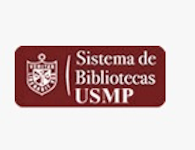Mostrar el registro sencillo del ítem
Peruvian horse sickness virus and Yunnan orbivirus, isolated from vertebrates and mosquitoes in Peru and Australia
| dc.contributor.author | Attoui, Houssam | |
| dc.contributor.author | Mendez-Lopez, Maria Rosario | |
| dc.contributor.author | Rao, Shujing | |
| dc.contributor.author | Hurtado-Alendes, Ana | |
| dc.contributor.author | Lizaraso-Caparo, Frank | |
| dc.contributor.author | Mohd Jaafar, Fauziah | |
| dc.contributor.author | Samuel, Alan R. | |
| dc.contributor.author | Belhouchet, Mourad | |
| dc.contributor.author | Pritchard, Lindsay I. | |
| dc.contributor.author | Melville, Lorna | |
| dc.contributor.author | Weir, Richard P. | |
| dc.contributor.author | Hyatt, Alex D. | |
| dc.contributor.author | Davis, Steven S. | |
| dc.contributor.author | Lunt, Ross | |
| dc.contributor.author | Calisher, Charles H. | |
| dc.contributor.author | Tesh, Robert B. | |
| dc.contributor.author | Fujita, Ricardo | |
| dc.contributor.author | Mertens, Peter P. C. | |
| dc.date.accessioned | 2020-07-20T18:10:22Z | |
| dc.date.available | 2020-07-20T18:10:22Z | |
| dc.date.issued | 2009-11-25 | |
| dc.identifier.citation | Attoui H., Mendez MR., Rao S., Hurtado A., Lizaraso F., Mohd F., et al. Peruvian horse sickness virus and Yunnan orbivirus, isolated from vertebrates and mosquitoes in Peru and Australia. Virology. 2009; 394(2): 298-310. | es_PE |
| dc.identifier.uri | https://hdl.handle.net/20.500.12727/6364 | |
| dc.description.abstract | During 1997, two new viruses were isolated from outbreaks of disease that occurred in horses, donkeys, cattle and sheep in Peru. Genome characterization showed that the virus isolated from horses (with neurological disorders, 78% fatality) belongs to a new species the Peruvian horse sickness virus (PHSV), within the genus Orbivirus, family Reoviridae. This represents the first isolation of PHSV, which was subsequently also isolated during 1999, from diseased horses in the Northern Territory of Australia (Elsey virus, ELSV). Serological and molecular studies showed that PHSV and ELSV are very similar in the serotype-determining protein (99%, same serotype). The second virus (Rioja virus, RIOV) was associated with neurological signs in donkeys, cattle, sheep and dogs and was shown to be a member of the species Yunnan orbivirus (YUOV). RIOV and YUOV are also almost identical (97% amino acid identity) in the serotype-determining protein. YUOV was originally isolated from mosquitoes in China. | es_PE |
| dc.description.sponsorship | "Reo ID" de la subvención de la UE QLK2-2000-00143 | es_PE |
| dc.format.extent | pp. 298-310 | es_PE |
| dc.language.iso | eng | es_PE |
| dc.publisher | Elsevier B.V. | es_PE |
| dc.relation.ispartof | urn:issn:0034-9887 | |
| dc.relation.ispartofseries | Virology;vol. 394, no. 2 | |
| dc.relation.uri | https://doi.org/10.1016/j.virol.2009.08.032 | es_PE |
| dc.rights | info:eu-repo/semantics/openAccess | es_PE |
| dc.rights.uri | https://creativecommons.org/licenses/by-nc-nd/4.0/ | es_PE |
| dc.source | Repositorio Académico USMP | es_PE |
| dc.source | Universidad San Martín de Porres - USMP | es_PE |
| dc.subject | Orbivirus | es_PE |
| dc.subject | Reoviridae | es_PE |
| dc.subject | Manifestaciones neurológicas | es_PE |
| dc.title | Peruvian horse sickness virus and Yunnan orbivirus, isolated from vertebrates and mosquitoes in Peru and Australia | es_PE |
| dc.type | info:eu-repo/semantics/article | es_PE |
| thesis.degree.name | Medicina Humana | es_PE |
| thesis.degree.grantor | Universidad de San Martín de Porres. Facultad de Medicina Humana | es_PE |
| thesis.degree.discipline | Medicina | es_PE |
| dc.subject.ocde | https://purl.org/pe-repo/ocde/ford#3.02.00 | es_PE |
Ficheros en el ítem
Este ítem aparece en la(s) siguiente(s) colección(es)
-
Artículos [274]








